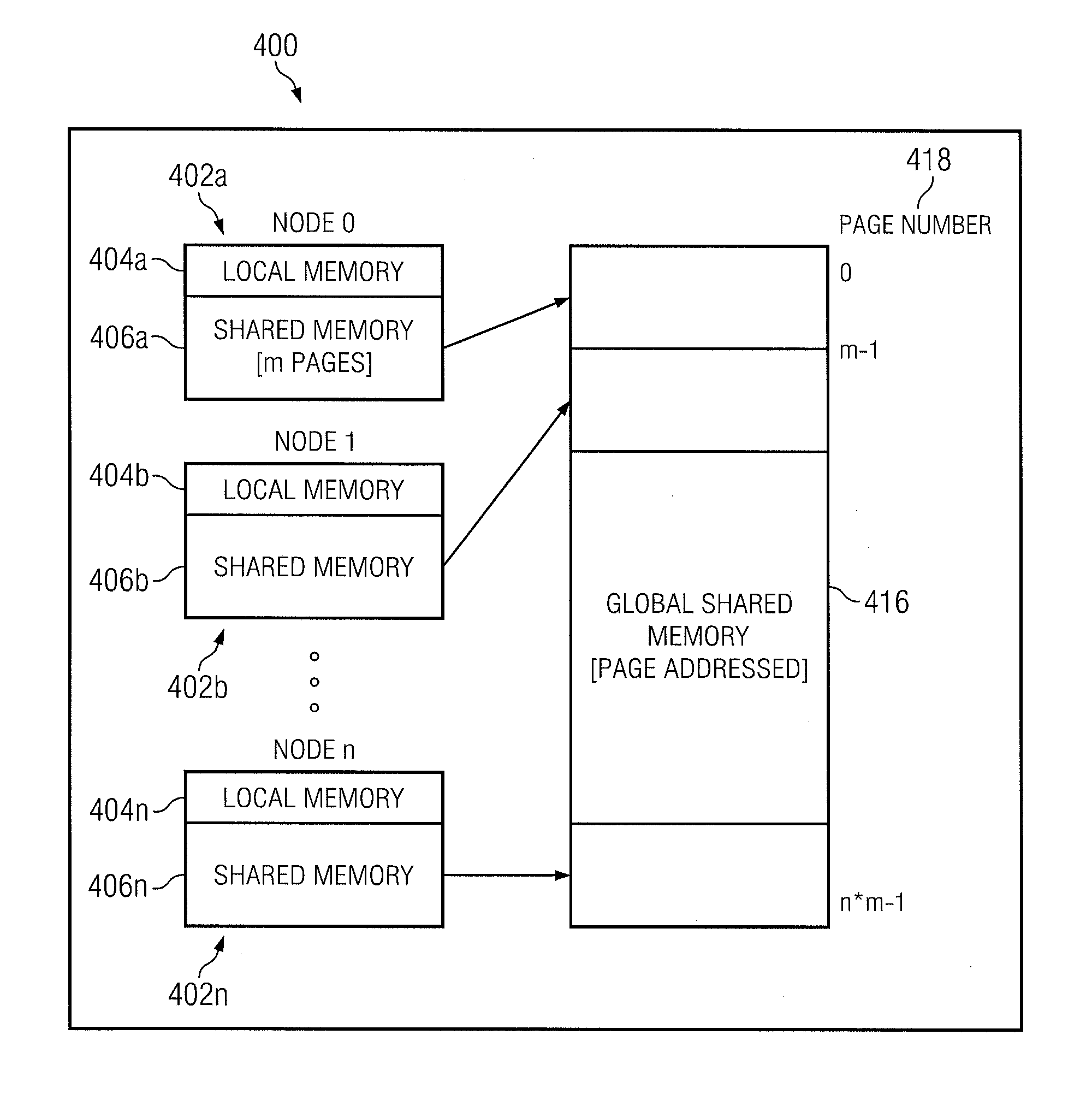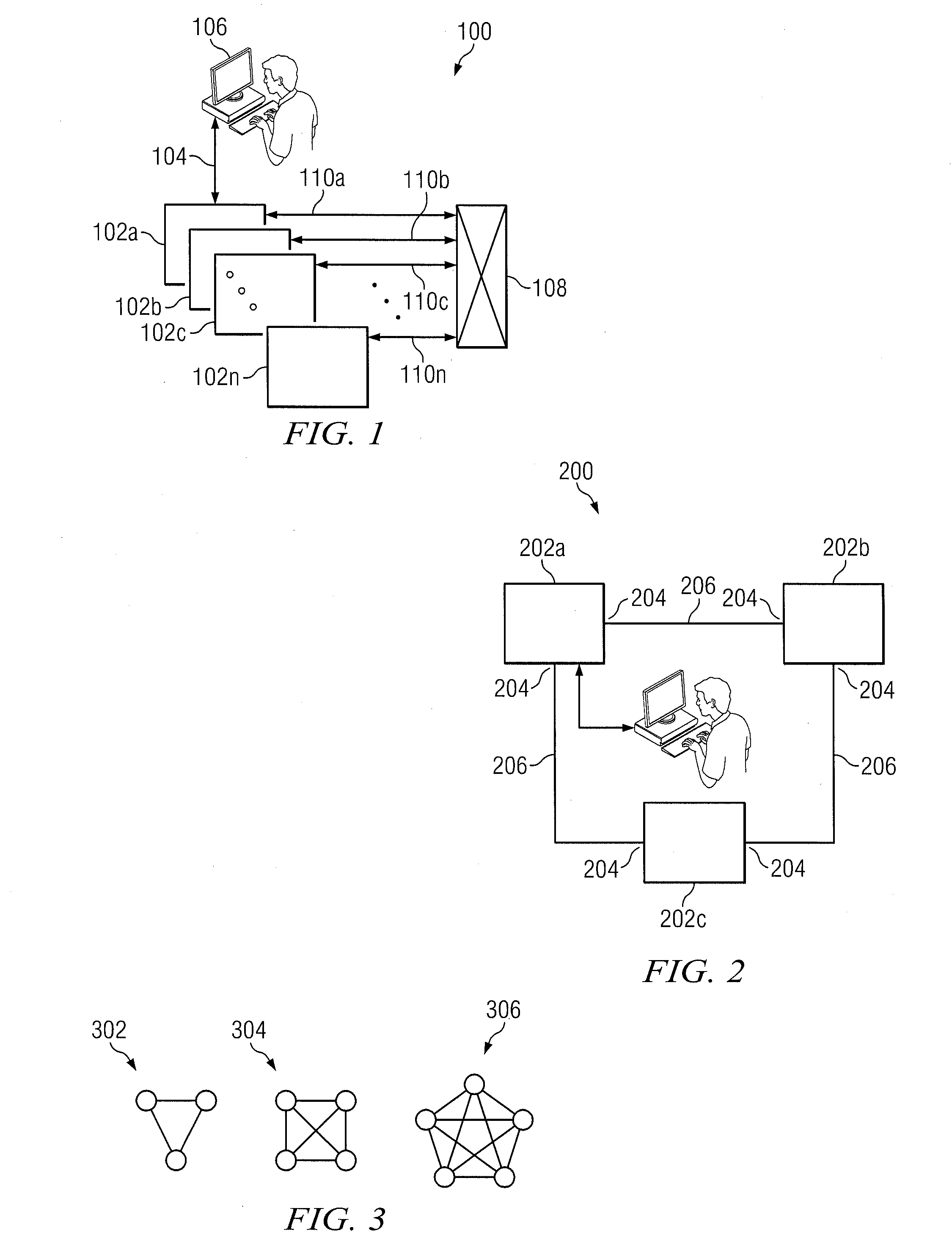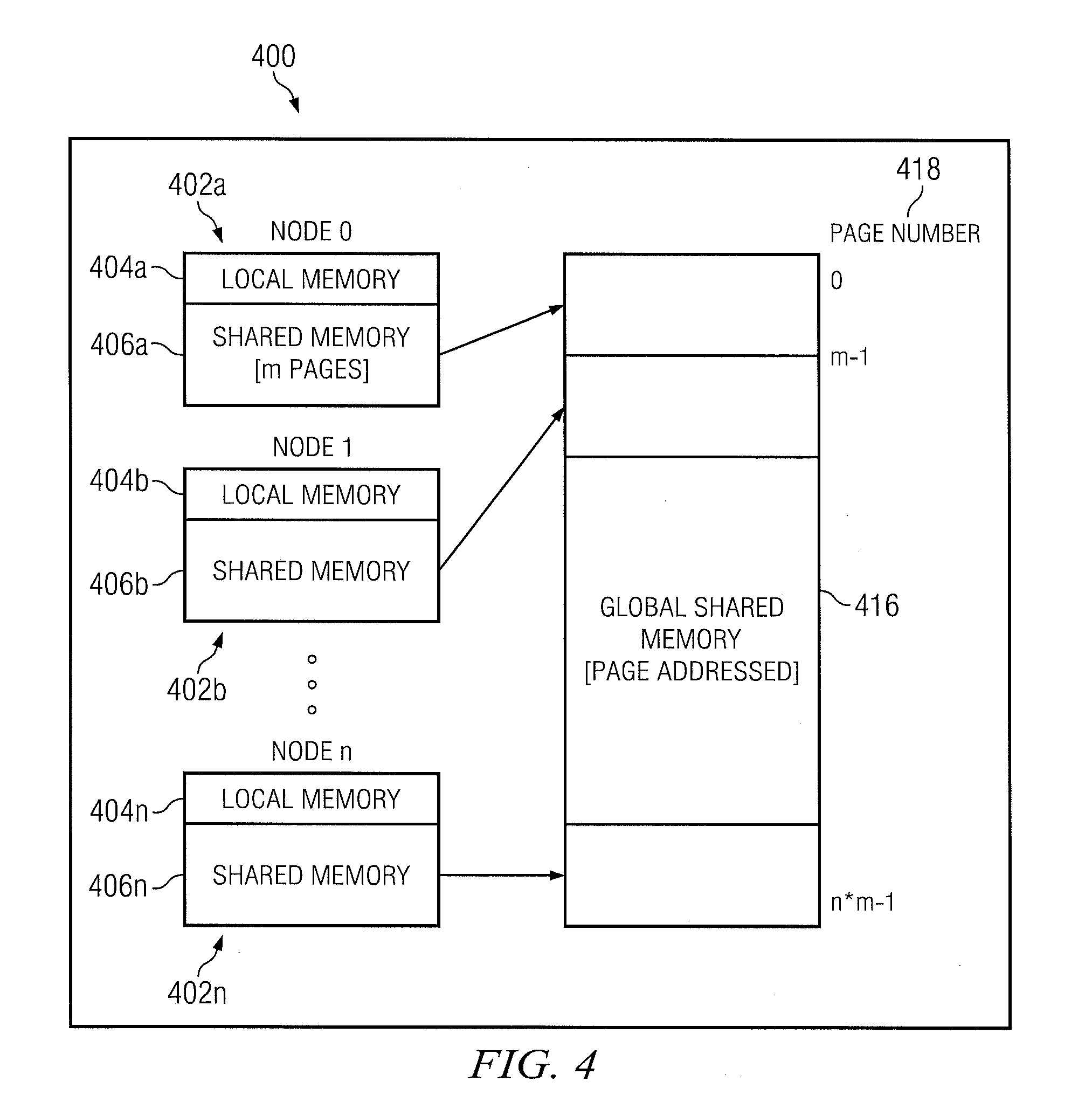Distributed symmetric multiprocessing computing architecture
a computing architecture and distributed symmetric technology, applied in digital computers, memory adressing/allocation/relocation, instruments, etc., can solve problems such as not providing a user interfa
- Summary
- Abstract
- Description
- Claims
- Application Information
AI Technical Summary
Benefits of technology
Problems solved by technology
Method used
Image
Examples
embodiments of invention
[0050]While this invention has been particularly shown and described with references to example embodiments thereof, it will be understood by those skilled in the art that various changes in form and details may be made therein without departing from the scope of the invention encompassed by the appended claims.
[0051]Embodiments of the invention or portions thereof implemented in the form of hardware, firmware, or software. If implemented in software, the software may be any language capable of performing embodiments as discussed herein. The software may be stored as machine executable instructions on any form of machine readable medium, such as RAM, ROM, CD-ROM, loaded by a processor, and executed by the processor.
PUM
 Login to View More
Login to View More Abstract
Description
Claims
Application Information
 Login to View More
Login to View More - R&D
- Intellectual Property
- Life Sciences
- Materials
- Tech Scout
- Unparalleled Data Quality
- Higher Quality Content
- 60% Fewer Hallucinations
Browse by: Latest US Patents, China's latest patents, Technical Efficacy Thesaurus, Application Domain, Technology Topic, Popular Technical Reports.
© 2025 PatSnap. All rights reserved.Legal|Privacy policy|Modern Slavery Act Transparency Statement|Sitemap|About US| Contact US: help@patsnap.com



